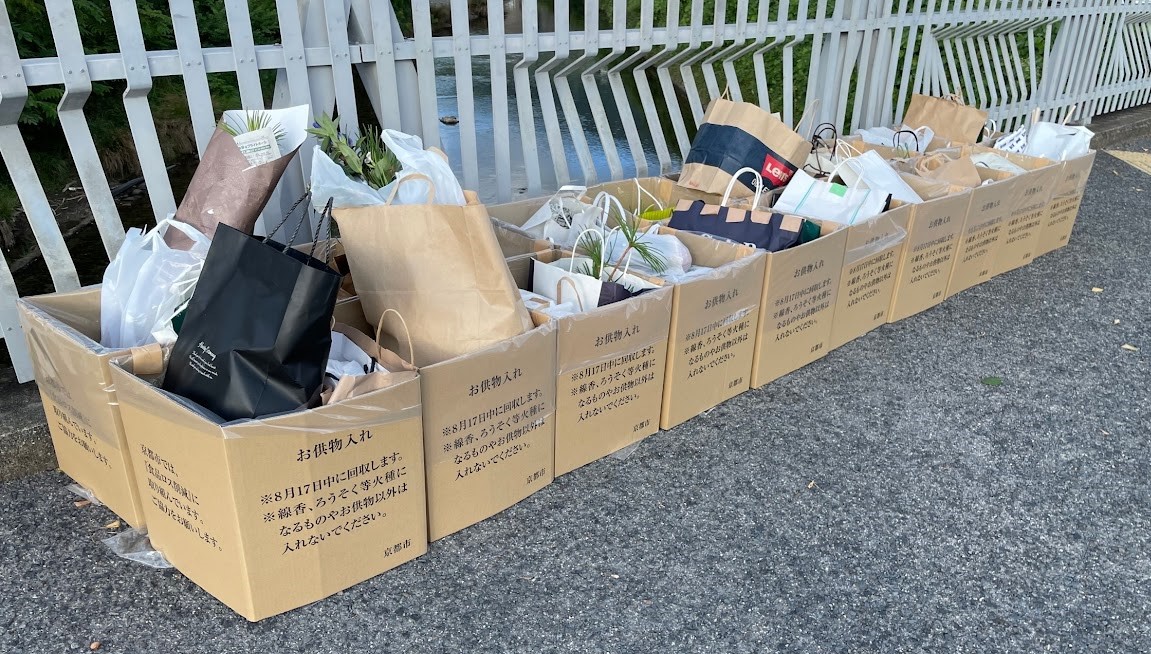この段ボールの意味をご存じでしょうか

この写真に写っている段ボールが並んだ光景は、お盆の時期の京都市内
川の近くや橋のたもとで見かけられます😌
一見、「ゴミの回収かな?」と思われるかもしれませんが、
こちらは決してゴミ箱ではありません。
この段ボールには、お盆の時期に自宅に帰ってこられたご先祖様をはじめ、
今は亡き、大切な家族に供えた物を入れる箱です。
京都市内では昔から、お盆にお供えした物や花を川に流す習慣がありました。
しかし近年は環境への配慮などの観点から、
川には直接流さず、このように京都市が地域ごとに回収しています。
皆様のお住まいの地域ならではの風習はありますか?
日本国内ですと、お盆の時期『灯篭流し』や『精霊船』などが見られますし、
海外ですと『死者の日』や『清明節』など死者を迎え・弔う日があります。
ご先祖様に感謝する気持ちは世界中どこへ行っても同じですね😊✨
もしお盆の期間中、京都市内でこの光景を見かけても
触らずそっと見守ってくださいね🌿
・
・
The scene of cardboard boxes lined up in this photo can be seen near rivers or at the foot of bridges in Kyoto City during the Obon season.😌
At first glance, you might think, “Is this for garbage collection?” but these are certainly not garbage bins.
These cardboard boxes are used to place offerings that were presented to ancestors who have returned home during the Obon season, as well as to dearly departed family members.
In Kyoto City, there has long been a tradition of floating offerings and flowers in the river during Obon. However, in recent years, due to environmental considerations, offerings are not directly floated in the river. Instead, the city of Kyoto collects them in designated areas like this.
Are there any unique customs in your local area?
In Japan, during the Obon season, you can see practices such as Tōrō Nagashi (floating lanterns) or Shōryōbune (spirit boats).
“Overseas, there are days to honor and remember the dead, such as ‘The Commemoration of All the Faithful Departed’ and ‘Qingming Festival.'”
The feeling of gratitude toward our ancestors is universal, isn’t it😊✨
If you happen to see this sight in Kyoto during the Obon period, please do not touch the boxes and simply observe quietly. 🌿